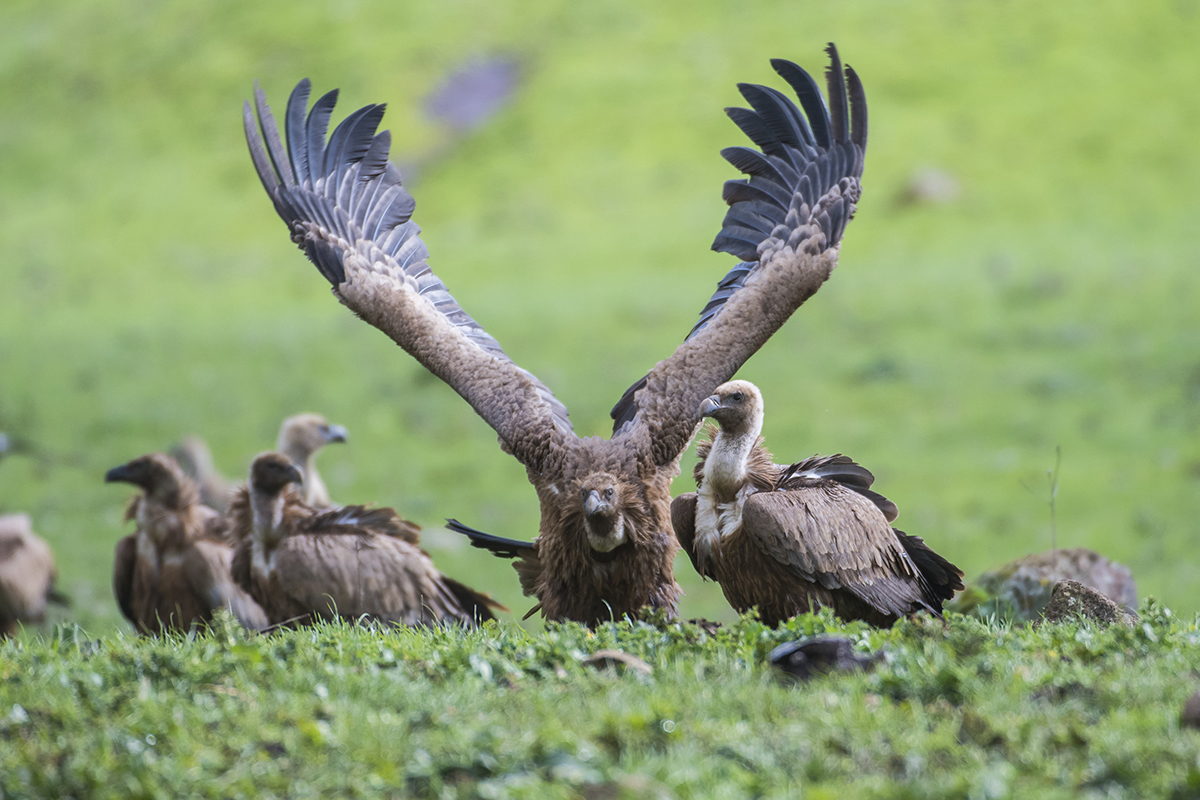Poison is the main threat to vultures worldwide, as identified in the Vulture multi-Species Action Plan, a comprehensive strategic document that highlights priority for action for the conservation of 15 species of old world´s vultures, and that will be hopefully adopted by the signatories of the Convention for Migratory Species (CMS), to be held in the Philippines in the end of this month.
As a consequence, many countries dedicate considerable resources to fight this threat – the illegal use of substances to kill predators or wildlife, and that often results in the poisoning of vultures. The EU LIFE budget for example funds anti-poisoning actions in a number of projects dedicated to vultures, including the LIFE UNDER GRIFFON WINGS.
Now, a griffon vulture that we have been following as part of the project – aptly named LIFE, to celebrate the 25th anniversary of the LIFE program, was recently killed by poison.
LIFE had been released with a tag last June – a male born in 2014 in the wild, it was recovered in 2015 because of a radio-ulna fracture (see photo). After two years of rehabilitation in the Wildlife Rescue centre of Bonassai (see photos), he was finally ready to be released this summer (see photo).
The GPS data revealed that after the release he spent the first two weeks in the Bosa area, frequently visiting the feeding area between Pozzomaggiore, Montresta and Sindia. Then his movements stopped, and for two days the GPS signal came from the same place in the countryside between Padria and Montresta. On the 3rd day, thanks to the VHF signal, it was possible to find LIFE under a bush (see photo). The vulture was standing but he was very weak and dehydrated. He was immediately brought to the rescue centre, but, despite the medications given, he died on July 16th.
The post-mortem analysis, performed by the laboratories of the Istituto Zooprofilattico Sperimentale della Sardegna, revealed that death was attributable to a rodenticide anticoagulant. The active ingredient was Brodifacoum, a highly toxic second-generation rodenticide. It is also classified as single-dose anticoagulant, because one single feeding can deliver a toxic dose. Its toxicity is high even if assumed by inhalation and dermal contact, and thus it has one of the highest risks of secondary poisoning to both mammals and birds.
Probably LIFE ingested the poison from the carcass of an animal that in turn had eaten the poisoned bait. The anti-poison dog unit was alerted, but no poisoned baits nor carcasses were found in the area of LIFE’s recovery.
This is the first case of documented poisoning within the LIFE project, although poisoning incidents have happened before in Sardinia and are one of the main reasons why griffon vultures are relatively rare on the island.
The overall aims of LIFE UNDER GRIFFON WINGS is to rescue the Sardinian griffon population from a critical demographic situation (around 130 individuals) by mitigating the main threats limiting its
viability. The main actions foresee to:
– create a network of feeding stations, which will guarantee enough food supply to the vulture population;
– create an anti-poison dog unit and developing a communication actions to raise awareness on the threat caused by the illegal use of poisoned baits;
– restocking program: the liberation of 60 griffon vultures from Spain to resolve the critical demographic situation of the population;
– mitigate human disturbance in the reproductive sites;
– reinforce the local wildlife rescue centre by equipping it with the facilities needed for the rehabilitation of large vultures.
The VCF supports this important conservation project which was developed by the University of Sassari in partnership with the Municipality of Bosa, the Forestry Agency and the Corpo Forestale di Vigilanza Ambientale. The project is implemented in collaboration with the regional Departments of Environmental Protection and Health, the Regional Natural Park of Porto Conte and the Istituto Zooprofilattico Sperimentale of Sardinia, the Junta de Andalucia and the VCF.
The VCF provides technical expertise and advice, while at the same time securing and transporting the griffon vultures that will be released in Sardinia. 41 vultures have already been transported to Sardinia and are waiting release.
Photos: LIFE Griffone



